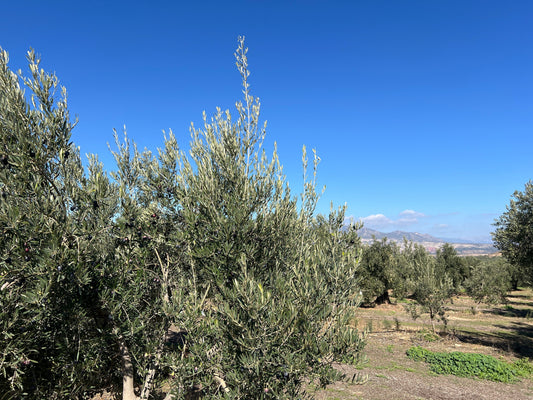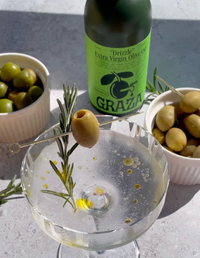
What Does Olive Oil Color Have To Do With Quality?
Olive oil, often referred to as liquid gold (perhaps more aptly named liquid greenish-gold), is a staple in many kitchens around the world. It's color and taste can be measured along an olivey spectrum. You might have heard that the greener the oil, the better the quality. But is this true, or just another kitchen myth? Let’s dive into the colorful world of olive oil and uncover the truth.
Does Color Equal Quality?
Let’s bust the myth right away: the color of olive oil is not a definitive indicator of quality. Quality depends on several factors, and while color can hint at some aspects, it’s not the whole story.
The Rainbow of Olive Oil
First things first: why does olive oil come in different colors? The answer lies in the olives themselves and the process they undergo to become the oil we drizzle over our salads, pizzas, ice cream, etc.
Pale Yellow: This typically comes from fully ripe olives (like the ones we use to make Sizzle) The oil tends to be milder and has a buttery flavor, perfect for cooking, baking, or even a subtle touch for salads or pizzas.
Golden Yellow: The most common color, this oil comes from mid-ripeness olives and strikes a balance in flavor – not too mild, not too strong.
Green: This vibrant hue comes from early-harvested olives, packed with chlorophyll and polyphenols (like the ones we use to make Drizzle) Green olive oil usually has a robust, peppery flavor that makes an excellent addition to any dish for that extra flavor kick.
Where Does the Color in Olive Oil Come From?
There are two components that contribute to olive oil's color: chlorophyll and carotenoids.
Chlorophyll: The more chlorophylls the greener the oil. Oils that are high in chlorophyll are often made from early-harvest olives and have a fresh, grassy flavor. However, chlorophyll is sensitive to light and can degrade over time, so storing olive oil properly is crucial.
Carotenoids: These pigments are responsible for the yellow and golden tones. Carotenoids are more stable than chlorophyll and contribute to the oil’s antioxidant properties.
Does Anything Else Contribute to Olive Oil's Color?
How the olives are processed can also affect the oil’s color. Cold-pressed olive oil retains more natural pigments and flavors compared to oils that undergo extensive processing and heat. We love cold-pressed oil cause it encapsulates all picual perfection that contributes to Sizzle's golden hues and Drizzle's green punches.
Now that you've got the lowdown on olive oil's color spectrum, you can choose the oil that best fits the flavor profile you seek!

















